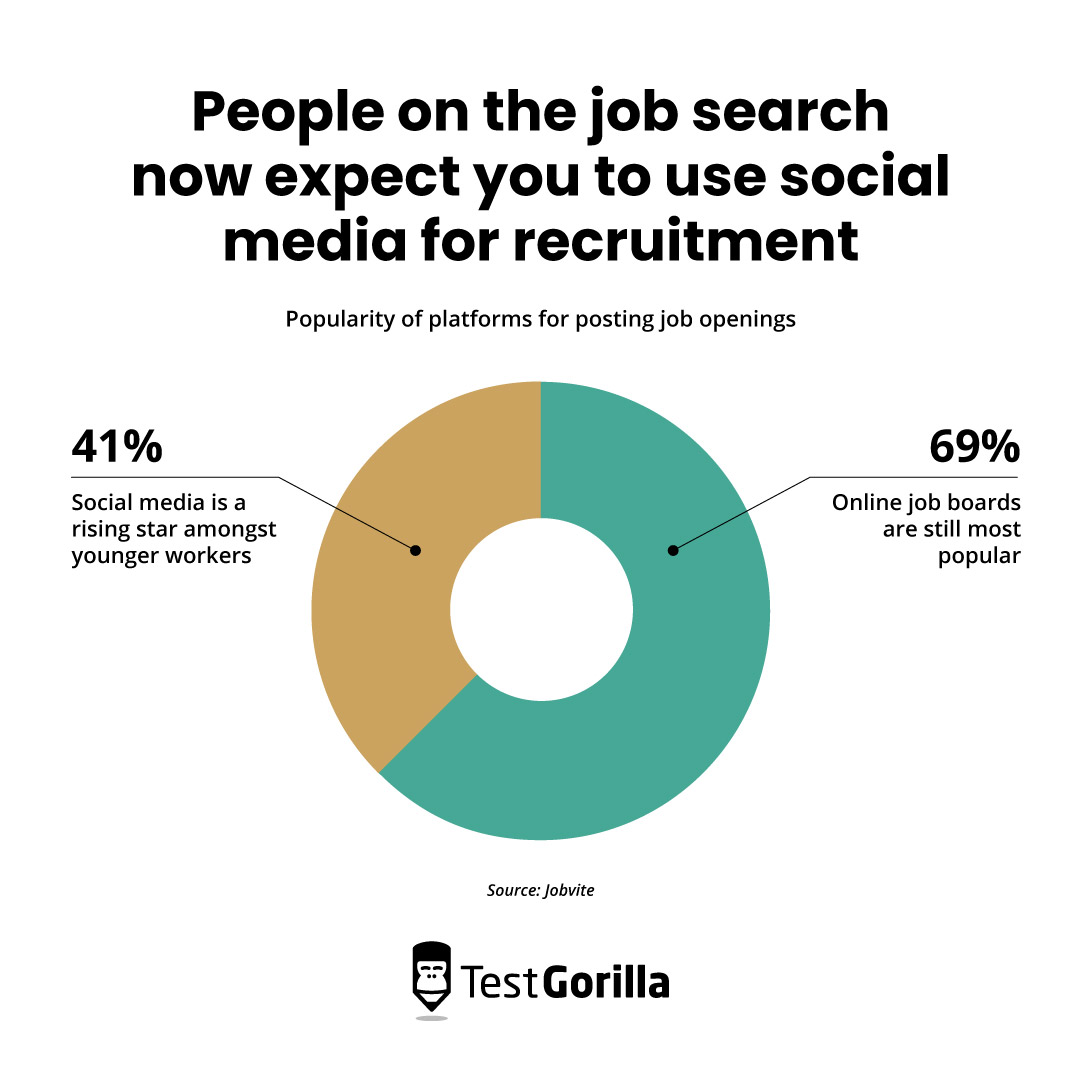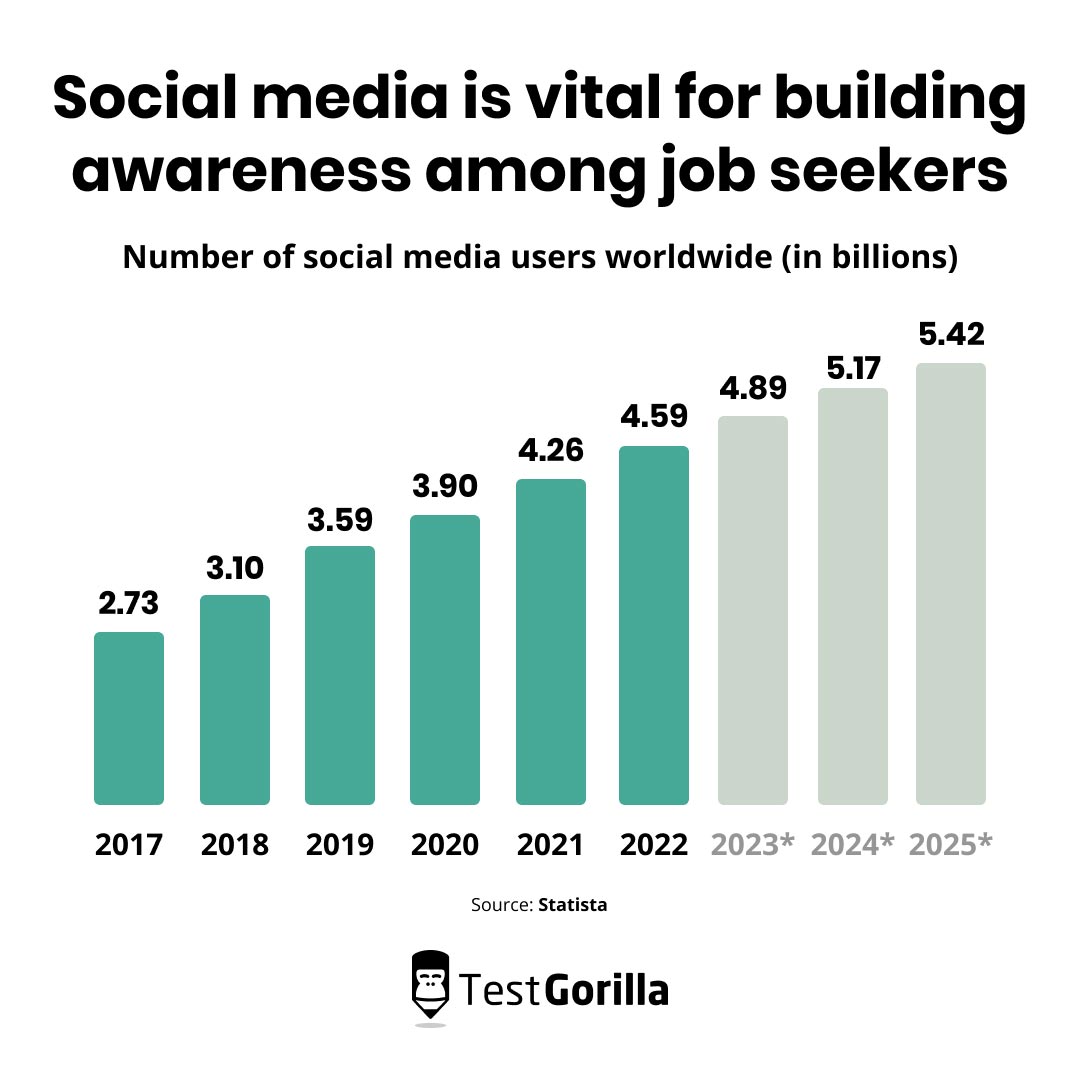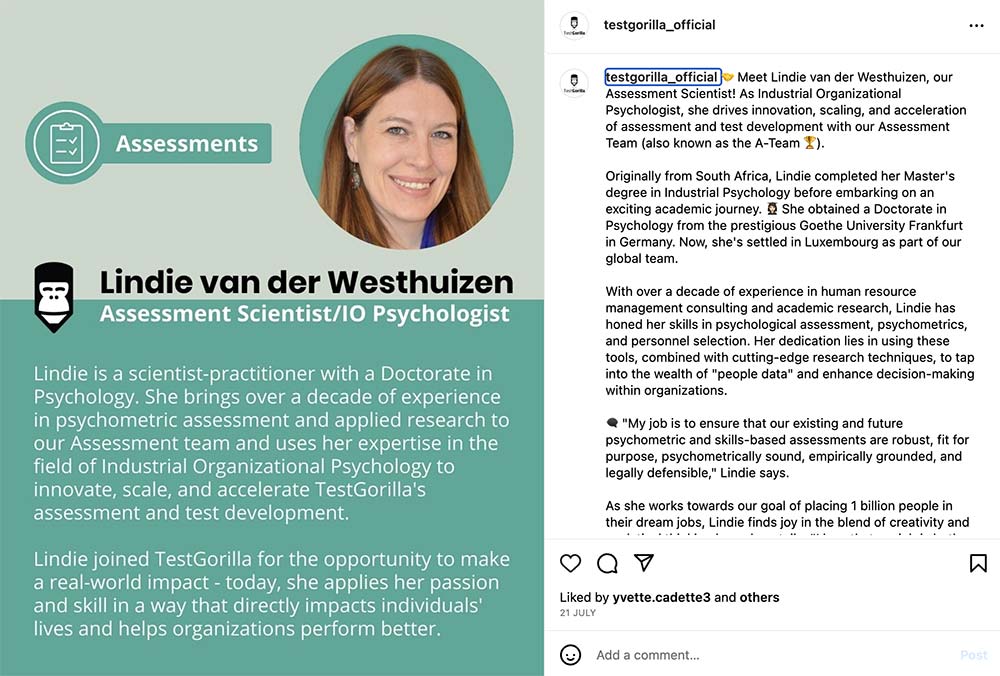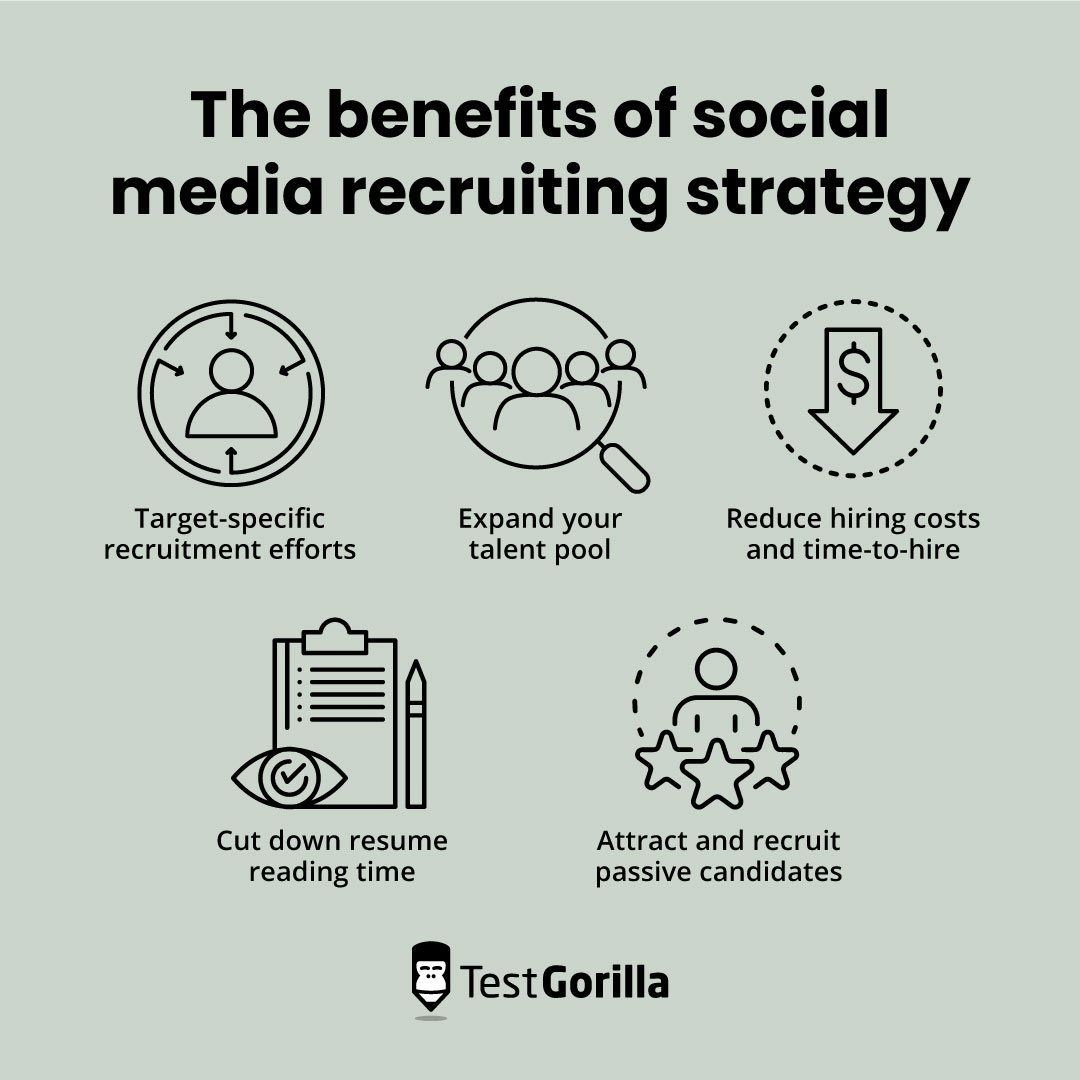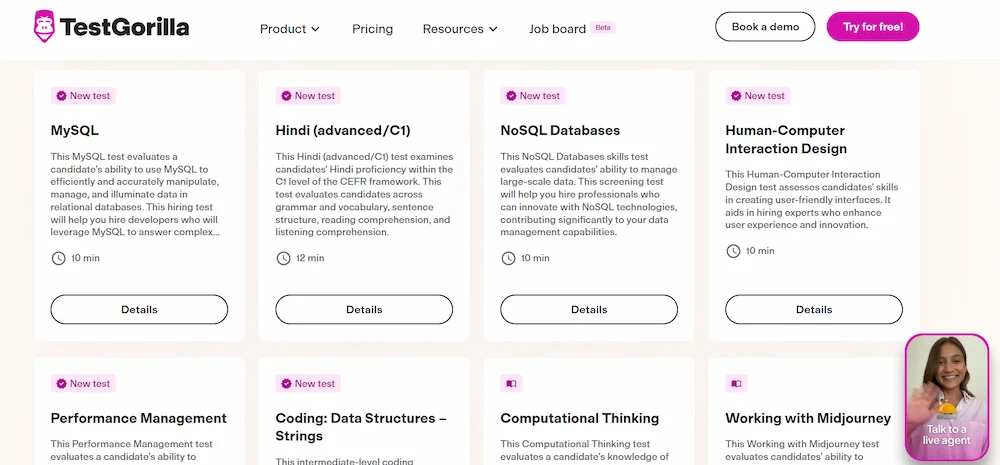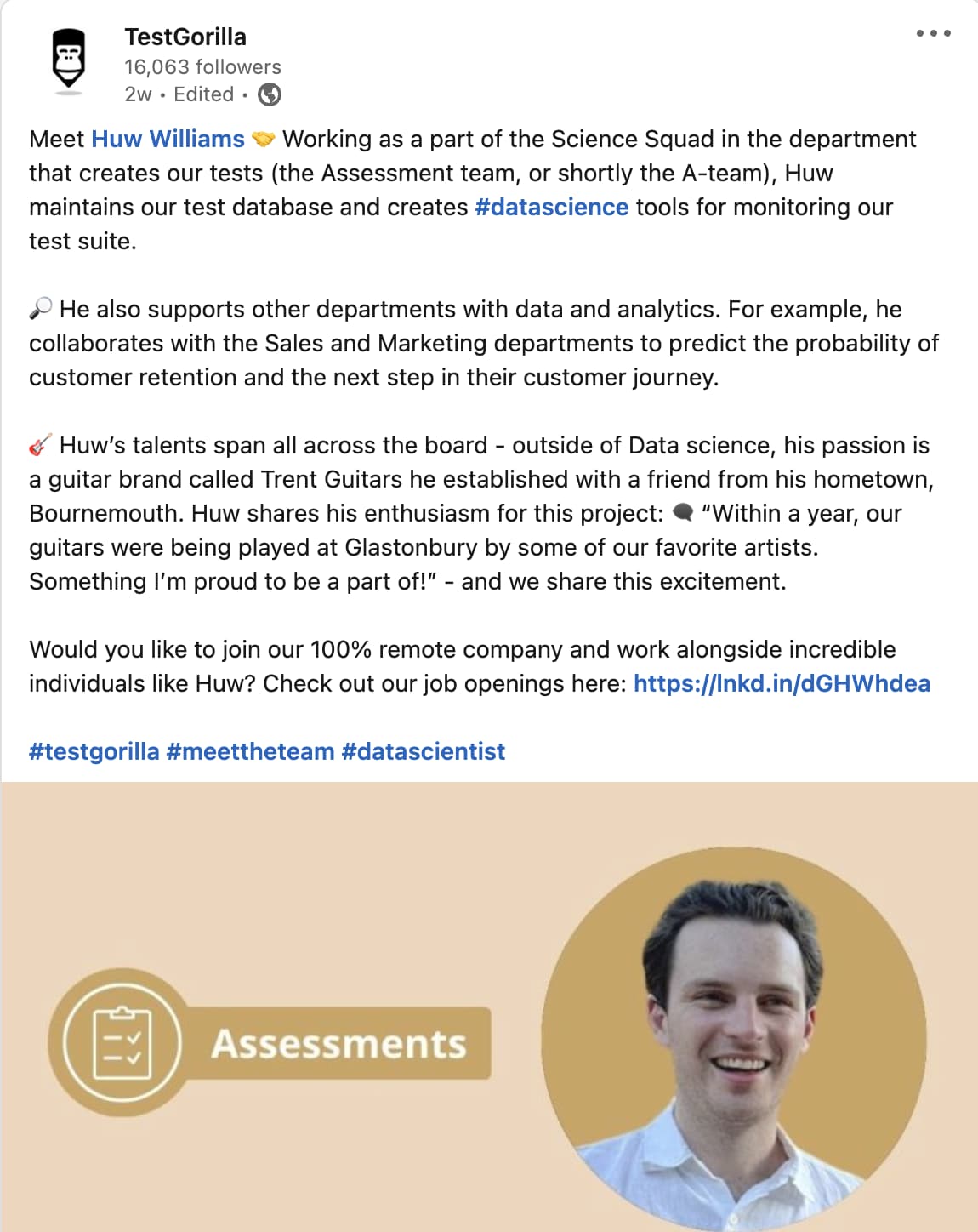It’s safe to assume you’ve posted job ads before. You use the most popular traditional recruiting boards and channels. You offer enticing incentives like an employee referral program and unlimited PTO.
Why, then, are your applications running low? Among those you get, why are so many candidates inappropriate for your roles?
The problem is that you’re only hitting active job seekers, but a sizable potential target audience includes “passive candidates” – candidates with the right skills who aren’t going out of their way to find a new job for one reason or another.
Now, if they’re not on job boards, where are these passive candidates?
The same place just about everyone else is, of course: social media sites. Social media recruiting is one of the most effective talent acquisition strategies for reaching both active and passive candidates.
By pitching roles via platforms such as LinkedIn, Facebook, and Instagram, you reach up to 86% of job searchers who prioritize these apps.[1]
Combining social media, skills testing, and recruitment:
Improves your employer branding
Boosts awareness of your corporate identity
Creates a more satisfying candidate experience
Reduces time and cost per hire
Let's look at why social media recruitment is so powerful and how you can combine it with skills-based hiring.
Table of contents
- What is social media recruiting?
- Why is social media recruitment important?
- The benefits of social media recruiting strategy
- 8 best practices for leveraging social media recruiting strategies to acquire top talent
- 4 examples of companies succeeding with social media recruitment as a talent acquisition strategy
- Social media recruiting: Consistent refills for your talent pool
What is social media recruiting?
Social media recruiting is a hiring strategy where you advertise roles and promote your brand through social networks.
For example, through Facebook, you’d pitch a quick headline, list some of the main benefits of the role, and add a link for readers to follow through and apply.
With Instagram, you could even condense a job listing into a simple image carousel and description, fitting all the role information onto one screen or slideshow so that your job opportunities show up right on people’s timelines. Here’s an example:
LinkedIn, meanwhile, as a career-focused social network, takes more of a professional slant. You could go in-depth about the role’s details and ask prospects to apply with just a few clicks using the platform's "Easy Apply" service.
The way you use social media for recruiting varies depending on:
The role you’re hiring for
Your employer brand
The social platform in use
Regardless of the method, recruiting with social media is one of the most effective talent acquisition trends to have arisen in the last few decades.
You’re pitching your company where your candidates reside. Instead of posting an ad and expecting people to seek you, you’re pursuing applicants through their favorite apps.
It’s not an uninvited approach, either. People on the job search now expect you to use social media for recruitment. Research shows at least 35% of job seekers use social media to learn about new roles.
It’s keeping pace with job boards as the most popular outlet for role openings:
HR specialists, too, are leaning more towards social media to find talent, with 98% of recruiters using LinkedIn for job openings.
What does social recruiting involve?
As we said earlier, a good social media recruiting strategy appeals to passive candidates and active job seekers. However, you need to build an appealing, reputable employer brand, not just list roles through socials whenever they arise.
Effective social recruiting strategies could include:
Connecting and networking with professionals
Building an online presence with regular content
Reaching out to high potential (HiPo) talent with early job openings
Social media offers companies and recruiters direct access to professionals. It’s revolutionizing how people find work and fill roles.
Why is social media recruitment important?
Social media recruitment is more efficient, more selective, and less spammy than traditional job board posting.
Prospective candidates simply don’t resonate with traditional job listings the same way they engage with social media.
Using social media-centered recruiting methods is a passive recruiting strategy important for employers and applicants alike. Let's break down the positives for both sides.
Importance for employers
Social posts make employers more visible. Social media recruiting tools such as LinkedIn Sales Navigator and Meta Business Suite help HR staff find specific demographics to approach, too.
What’s more, data shows that 75% of people prioritize using social media to research brands. It’s where they build their first impressions of your culture and identity.
Social media is vital for building awareness among active job seekers and passive future candidates.
Social media use is becoming more widespread, too. Records show around 4.89 billion people use some form of social media in their daily lives, and the number is increasing:
Brands recruiting via social media consistently increase their reach, provided they post and engage with people regularly. There are millions of new graduates in the US to reach out to annually, too.
As mentioned, up to 86% of people looking for work use social media apps for help. With a social-centered recruitment process, you capitalize on active hunters and passive applicants who might be interested in joining you later on.
Importance for applicants
Regardless of what they apply for, job hunters crave an engaging candidate experience. Using social media and reaching out to people through their favorite networks ensures you meet them halfway.
With careful branding and social media marketing, you ensure applicants know who you are, and help them get comfortable with how you work. It’s candidate nurturing without engaging directly with every follower.
By aligning your company values with the messaging of your social media presence, you show applicants how you value people in your workforce and what you stand for. Here’s how we show our team members’ value through Instagram:
Prospects using social media to hunt for jobs do so without wanting to read walls of boring text for brands they’ve never heard of.
They expect less spam and fewer hoaxes, meaning building your social media profile and brand earns you more confidence and trust.
The best insights on HR and recruitment, delivered to your inbox.
Biweekly updates. No spam. Unsubscribe any time.
The benefits of social media recruiting strategy
Used effectively, the best social media recruitment schemes can:
Target-specific recruitment efforts
Reduce hiring costs and time-to-hire
Cut down resume reading time
Attract and recruit passive candidates
Let’s dig into these points.
Target-specific recruitment efforts
Social media has revolutionized direct marketing for the better. It’s now possible to target specific demographics, behaviors, and interests.
What’s more, personalizing marketing efforts in this way boosts engagement by up to three-quarters.[2]
Prospects for highly specific roles feel more engaged with job offers specialized around their skills and interests, too.
Social media recruitment helps HR managers segment hiring plans and maximize their finances. There’s no need to waste entire marketing budgets on single-post campaigns or catch-all ads.
Expand your talent pool
Effective talent pool management ensures you have a reliable source of highly skilled people to hire anytime. Expanding your talent pool means you have a better chance of finding the right candidates and finding them fast.
Social media recruitment helps expand your talent pool by diversifying who you appeal to and the networks you have access to.
For example, the British charity Blood Cancer UK experienced a talent pool boost of 23% simply through optimizing existing recruitment campaigns and increasingly using social media for recruitment.
Increasing awareness of your brand through social media effectively opens more potential doors for future applicants.
Reduce hiring costs and time-to-hire
By attracting passive candidates and establishing a strong social brand, your marketing practically pays for itself. You avoid costly repeat campaigning with poor returns on your investments.
For example, the UK-based RS Components found that they saved almost 90% on hiring costs based on a social media recruitment drive gaining 35 hires.[3]
Time-to-hire reduces, too, because candidates warm up and recognize your brand easily. Beyond this, skills-based hiring further reduces the need for time-consuming screening and guesswork.
Targeting specific demographics through social media saves the time and money you'd typically spend searching for the right applicants through generic campaigns.
You could, for example, specify LinkedIn job openings based on industry, location, and skills listed on candidate profiles. Through Facebook, you could use Meta’s age, location, and “Like” data to build the ideal candidate persona to pitch to.
Cut down resume reading time
Social media platforms fill in many gaps that resumes frequently leave wide open.
This is because social media recruiting works hand-in-hand with skills-based hiring.
Once warmed up, recruiters simply need to use a custom assessment plan (i.e., through TestGorilla) to ensure they're the right culture add, have the communication skills required for a role, and are motivated enough to thrive in such an environment.
Social media and skills testing effectively remove the need for resume evaluation and guesswork altogether. There’s less risk of wasting budgets on the cost of a bad hire, too.
Attract and recruit passive candidates
Some of the most talented people who may never apply directly for your roles could be passive. They’re good company culture adds and would likely do well in your team, but may not be interested in what you offer right now.
When the ideal position does come along, they immediately enter the funnel without the need for any extra work on your part.
Up to 70% of the workforce is passive. By only appealing to active applicants, you only ever reach out to 30% of your potential talent pool.[4]
With social media recruiting, your posts and ads fall into the laps of qualified candidates who didn’t even know they were interested in your open position.
8 best practices for leveraging social media recruiting strategies to acquire top talent
Now you know why social media screening and recruiting is beneficial for finding the best talent, here are a few tips and ideas you could put into practice.
How to use social media for recruiting: 8 tips to try
Technique | Summary |
1. Pick the right social media channels | Different social apps appeal to different audiences, e.g., you could attract more engagement through Facebook compared to Instagram |
2. Build an ideal candidate profile with talent assessments | A clear job profile and skills testing program ensures you only attract the best hiring fits |
3. Embed social media campaigns into your recruitment marketing | Social campaigns automate brand development and engage with skilled candidates without the need for frequent recruitment drives |
4. Hire a social media manager | Social managers know how to engage with different audiences, embody brands, and manage multiple content streams |
5. Keep your employer branding clear | The best hires want to know why you’re worth applying to and that you’re consistent and supportive |
6. Engage passive candidates first | Passive recruitment pays off in the long term with careful brand seeding and an automated talent pool refill |
7. Monitor and measure your metrics | Audience tastes and needs change, and you rarely launch a perfect campaign the first time out |
8. Be natural | People want to engage with other people, not faceless, ingratiating brands and salespeople |
1. Pick the right social media channels
Different social media channels serve different audiences and purposes. For example, LinkedIn is suitable for most professional positions, and Instagram is ideal for artistic and creative roles. However, this is by no means exclusive.
If you need help determining which channels to work with, look at what your competitors are doing. Which media do they rely on the most?
Choose a social network to suit your branding and outreach strategy. If you're more B2C (business to consumer) than B2B (business to business), choose a friendly, open interface like Facebook, Instagram, or Threads.
LinkedIn is likely your best choice if you're interested in hiring experienced professionals who build their own corporate networks.
Of course, if you have enough resources, you’re free to explore multiple channels at once – assuming you pay as much attention to each one as you would if they were your only channel.
2. Build an ideal candidate profile with talent assessments
Always be ready with skills testing to back you up alongside your onboarding best practices. ICPs or ideal candidate profiles build clear expectations for what you need from applicants should they join you.
If you struggle with streams of bad hires, consider making your ICP more precise and explicit.
Make it clear to applicants via recruiting social media posts that you hire for specific skills over experience.
If you’re unsure of your ICP, creating a custom assessment plan with TestGorilla helps you get a feel for who your perfect candidate is.
With this, we get a feel for an applicant’s communicative ability, their attention to detail, how well they’re motivated at work, and how they grade on a technical skill (here, as an administrative assistant).
With each applicant, you test, measure their scores, and look for shared traits you'd like to aim for when hiring through social media in the future.
How did you find the best candidates? What inspired the highest-scoring applicants to reach out to you via socials? Don't be afraid to ask for feedback.
3. Embed social media campaigns into your recruitment marketing
Recruitment marketing is all about making sure prospects know you're hiring and that you're worth applying for.
Once you narrow down your ideal social apps, invite people to reach out and learn more about your roles.
With a strong employer brand and ICP, a simple social media campaign repeatedly engages with relevant, highly skilled candidates for as long as your post appears on their screens.
Always prioritize social media platforms when designing a recruitment marketing plan. These are also platforms people use in their free time, not necessarily for work.
Therefore, you catch people's attention during all hours of the day, not just during their active job-seeking hours.
4. Hire a social media manager
Running social media campaigns is hard work. It’s why social media managers carved out an industry some time ago.
The best social managers know how to target the right people, how long to run campaigns for, and how to translate talent acquisition analytics data from multiple sources.
A specialized manager can “be your brand” online, create and promote campaigns, and engage with individuals directly.
When hiring social media managers, use skills tests to narrow down candidate aptitude.
TestGorilla offers multiple talent assessments to add to a custom appraisal. alongside personality testing and a Culture Add test:
5. Keep your employer branding clear
The difference between employer and company branding is how you treat your employees. Employer branding shows job applicants what to expect once they join you. For example:
What benefits do you offer them?
Is there a culture of learning and development?
Is leadership development possible?
Social media offers ideal opportunities to share case studies from inside your firm.
Here’s another example of our approach to “meeting the team”
Posts like these help passive candidates see what it's like to work for us, even if they're not applying right now.
By sharing regular employer branding insights via social media, people get a feel for your workplace standards. Without these insights, you could risk hiring people who build false impressions of your brand and what you do.
Clarity, rather than salesmanship, is the key to effective candidate relationship management.
6. Engage passive candidates first
By posting jobs, you engage with active job hunters first. However, the key to successful social media recruiting is to build your brand with passive candidates in mind.
Become a familiar brand through regular social media posts and thought leadership posts. Get into people's long-term memories by creating insightful content, collaborating with followers, and showing what it’s like to work with you.
You still appeal to job hunters this way, but by seeding aspects of your culture and branding through regular social media posts, you build a self-fulfilling talent pipeline. This saves you money, time, and effort in future hiring campaigns.
It’s a slow-burning approach, but passive prospects arrive more confident and ready to join you after weeks or months of careful social media seeding.
7. Monitor and measure your metrics
Running data driven recruitment is all about using numbers to measure how effective campaigns are on paper.
Although you typically need some context to apply to certain recruitment drives, analyzing metrics helps slim down your recruitment activities and reduces time-to-hire.
Through social media recruiting, look carefully at how people engage with your posts.
Are certain posts shared more than others? Which demographics are interacting with your content the most?
Look for what’s not in your data, too. If you know your target demographic is 35- to 40-year-old passive hires, which posts simply aren’t resonating with this group? Does this demo react well to direct outreach?
With a social media manager on-side, you can refine your campaigns with talent acquisition analytics to ensure you only ever reach the people you need.
8. Be natural
The best job candidates smell a forced recruitment drive from a long way away.
Be sure to interact directly with people who follow you. Show interest in their comments and their work, shout them out, and send them direct messages to help them feel valued.
Go beyond simply sharing memes and posts for the sake of doing so. Back up your posts with insightful comments and invite discussions.
Show passive candidates you genuinely care about people's opinions and that you're not purely hiring to fill seats with promises of compensation and benefits.
4 examples of companies succeeding with social media recruitment as a talent acquisition strategy
Here are four case studies to show you how much of a difference a healthy social recruitment strategy could make to your talent pool.
Social media recruiting examples
Company | Summary |
Publishes consistent, informative YouTube content | |
Starbucks | Lays its brand out flat for all to see across social media platforms |
McDonald’s | Uses technology on Snapchat to approach young talent without being ingratiating |
TestGorilla | Shares stories on Instagram to establish branding and ethos |
Millions of us trust Google as a world leader in online search and technological innovation.
The brand uses this to its advantage with a series of YouTube channels filled with how-to guides and creative insights.
The “Life at Google” channel shares informative, informal stories from people who work for the brand at various levels. These videos are professional but lack a “filter,” meaning they show everyday experiences that passive applicants could easily resonate with.
The company’s output is inspiring, helpful, insightful, and never pushy. The videos appear laid-back, supportive, and knowledgeable.
Starbucks
Starbucks is a multi-billion dollar franchise with thousands of people working behind the scenes. Its branding makes it clear this is a company that cares about more than just making coffee.
The company’s careers page lays out its inner workings for all to see and to challenge the notion of "we’re just about coffee." It's easy to access details about roles in retail, manufacturing, kitchens, corporate, and distribution.
The brand’s careers social media accounts, such as its Instagram account, add personality to job postings. The firm’s accounts frequently share stories from people employed with the brand and encourage others to join in discussions.
By removing boundaries between applicants and the brand, the chain appears more appealing and approachable. This company puts its people first and actively celebrates the various ways its staff comes together.
McDonald’s
Recruiting through social media carries a risk of seeming ingratiating or forced. This is especially risky with savvy millennial and Gen Z consumers.
On paper, a brand like McDonald's using Snapchat to drive youth recruitment looks a little risky. However, the Australian wing of the brand used the platform’s tech to make recruitment and engagement “fun” for young people.
The fast food giant took time to understand its younger recruits demanded a faster, more engaging hiring process. Through what the company referred to as “Snaplications,” their social recruiting resonated in a way that felt refreshing, opened eyes, and solved problems.
Snaplications enabled users to apply for positions using Snapchat filters within seconds, thus removing the need to spend hours poring through tedious paperwork and filling out resumes.
The scheme was a resounding success in Australasia and took flight in the Middle East, too.[5]
TestGorilla
LinkedIn provides an ideal platform for our team to share stories and case studies regarding talent assessments and work-related issues.
Given many people use LinkedIn to connect with other professionals and build personal networks, we take the opportunity to shout about why we’re so passionate about skills testing.
For example, how has skills-based hiring helped our company in the past? How have we helped others?
Through regular stories, we seed our branding and passion with our followers. We want our readers to know skills testing makes an incredible difference to our own hiring techniques and long-term success.
Social media recruiting: Consistent refills for your talent pool
Social media's place in online marketing offers access to people worldwide, meaning you have abundant opportunities to show potential candidates who you are.
Social media recruiting is all about seeding employer branding for active job hunters and passive future talent.
Used effectively, it’s one of few talent acquisition strategies that can:
Drive down the need to keep recruiting
Filter out bad hires and warm up exceptional talent
Build ironclad employer branding
Help people engage easier with your brand
Always back up your recruiting on social media with skills-based hiring to attract diverse candidates. Consider testing those you do reach out to via social media with personality assessments such as the Enneagram test to build an ideal candidate profile.
Don’t waste time manually refilling your talent pipeline. Read our linked guide to find out how to streamline your hiring process further.
Sources
“2021 Future of Recruiting Study”. CareerArc. Retrieved August 21, 2023. https://explore.careerarc.com/future-of-recruiting
Davies, Andrew. (August 12, 2013). “Three major benefits of using personalisation in marketing”. Econsultancy. Retrieved August 21, 2023. https://econsultancy.com/three-major-benefits-of-using-personalisation-in-marketing/
Hull, Jon. (April 27, 2011). “50% reduction on recruitment costs: how social media became my best friend”. HR Magazine. Retrieved August 21, 2023. https://www.hrmagazine.co.uk/content/features/50-reduction-on-recruitment-costs-how-social-media-became-my-best-friend/
“The Ultimate List of Hiring Statistics”. LinkedIn Business. Retrieved August 21, 2023. https://business.linkedin.com/content/dam/business/talent-solutions/global/en_us/c/pdfs/Ultimate-List-of-Hiring-Stats-v02.04.pdf
“McDonald’s recruitment campaign on Snapchat receives more than 42,000 “Snaplications” from Saudi Job Hopefuls”. Snapchat for Business: Success Stories. Retrieved August 21, 2023. https://forbusiness.snapchat.com/inspiration/mcdonalds-recruitment-campaign-on-snapchat-receives-more-than-42-000
You've scrolled this far
Why not try TestGorilla for free, and see what happens when you put skills first.



